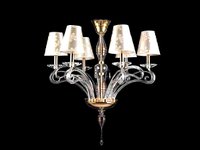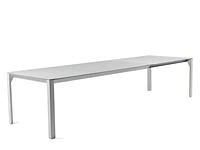Poltrone Bergère
Poltrone Bergère
All’inizio del Seicento incomincia ad
affermarsi, soprattutto in Francia, un sedile
più largo, comodo ed elastico, con schienale
e braccioli che sostituisce l’austero e
scomodo seggiolone delle epoche precedenti.
I primi esemplari di poltrona sono molto
solenni, in stile Luigi XIV, di legno intagliato
e dorato. Con l’evolversi del gusto, questo
mobile si fa sempre più comodo e leggero;
le gambe perdono le traverse di raccordo e
si incurvano secondo il gusto barocco.
Nel Settecento diventa di grande diffusione
e si creano modelli differenziati per ogni
esigenza; riposare, conversare, studiare…
Uno di questi, che si perfeziona all’inizio del
regno di Luigi XV, è la bergère, di forme
ampie, con braccioli pieni ed un comodo
cuscino mobile. Una sua variante ha lo
schienale incurvato ed avvolgente, che si
unisce ai braccioli fino a formare un’unica
linea a ferro di cavallo.
Armchairs
At the beginning of the 17th century, mainly
in France, larger, comfortable and elastic
seats became common. They had backs and
armrests and replaced the austere and
uncomfortable big chairs of the previous
centuries. The first examples of armchairs
were very solemn, in Louis XIV style, using
gilded and carved wood. As tastes evolved,
this type of furniture gradually became more
comfortable and lighter, the legs lost their
cross-braces in favor of baroque curved lines.
In the 18th century, this furniture became
widespread and models to suit different
needs, such as resting, chatting or studying,
were designed. A special type of armchair,
which attained perfection at the beginning
of Louis XV’s reign, was the so called
“bergère” – a large armchair with upholstered
armrest and a comfortable removable
cushion. One version features a curved
wrapping back which merges into the
armrests and forming horse-shoe shaped
outline.







